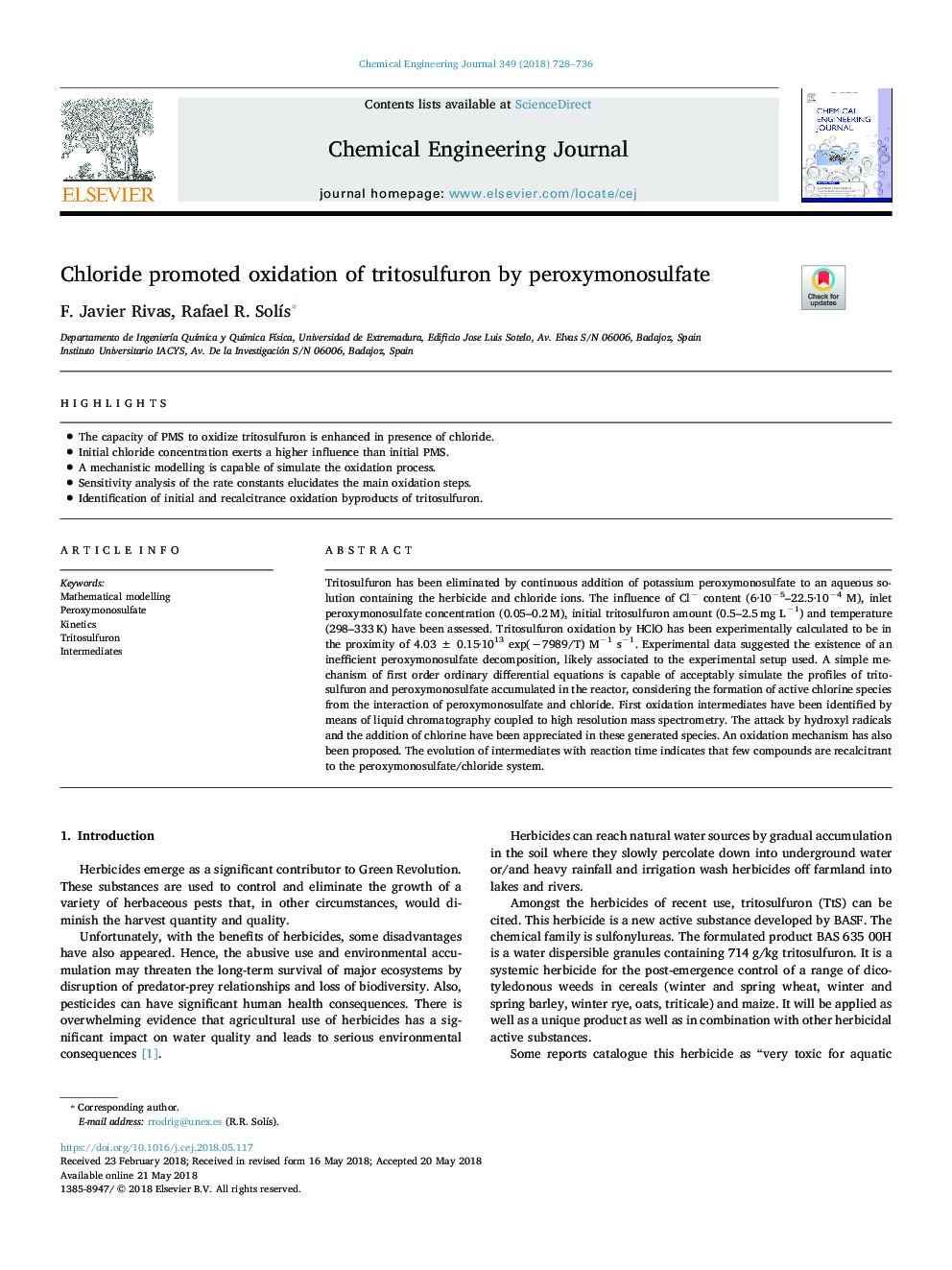| Article ID | Journal | Published Year | Pages | File Type |
|---|---|---|---|---|
| 6578649 | Chemical Engineering Journal | 2018 | 9 Pages |
Abstract
Tritosulfuron has been eliminated by continuous addition of potassium peroxymonosulfate to an aqueous solution containing the herbicide and chloride ions. The influence of Clâ content (6·10â5-22.5·10â4 M), inlet peroxymonosulfate concentration (0.05-0.2â¯M), initial tritosulfuron amount (0.5-2.5â¯mg Lâ1) and temperature (298-333â¯K) have been assessed. Tritosulfuron oxidation by HClO has been experimentally calculated to be in the proximity of 4.03â¯Â±â¯0.15·1013 exp(â7989/T) Mâ1 sâ1. Experimental data suggested the existence of an inefficient peroxymonosulfate decomposition, likely associated to the experimental setup used. A simple mechanism of first order ordinary differential equations is capable of acceptably simulate the profiles of tritosulfuron and peroxymonosulfate accumulated in the reactor, considering the formation of active chlorine species from the interaction of peroxymonosulfate and chloride. First oxidation intermediates have been identified by means of liquid chromatography coupled to high resolution mass spectrometry. The attack by hydroxyl radicals and the addition of chlorine have been appreciated in these generated species. An oxidation mechanism has also been proposed. The evolution of intermediates with reaction time indicates that few compounds are recalcitrant to the peroxymonosulfate/chloride system.
Related Topics
Physical Sciences and Engineering
Chemical Engineering
Chemical Engineering (General)
Authors
F. Javier Rivas, Rafael R. SolÃs,
